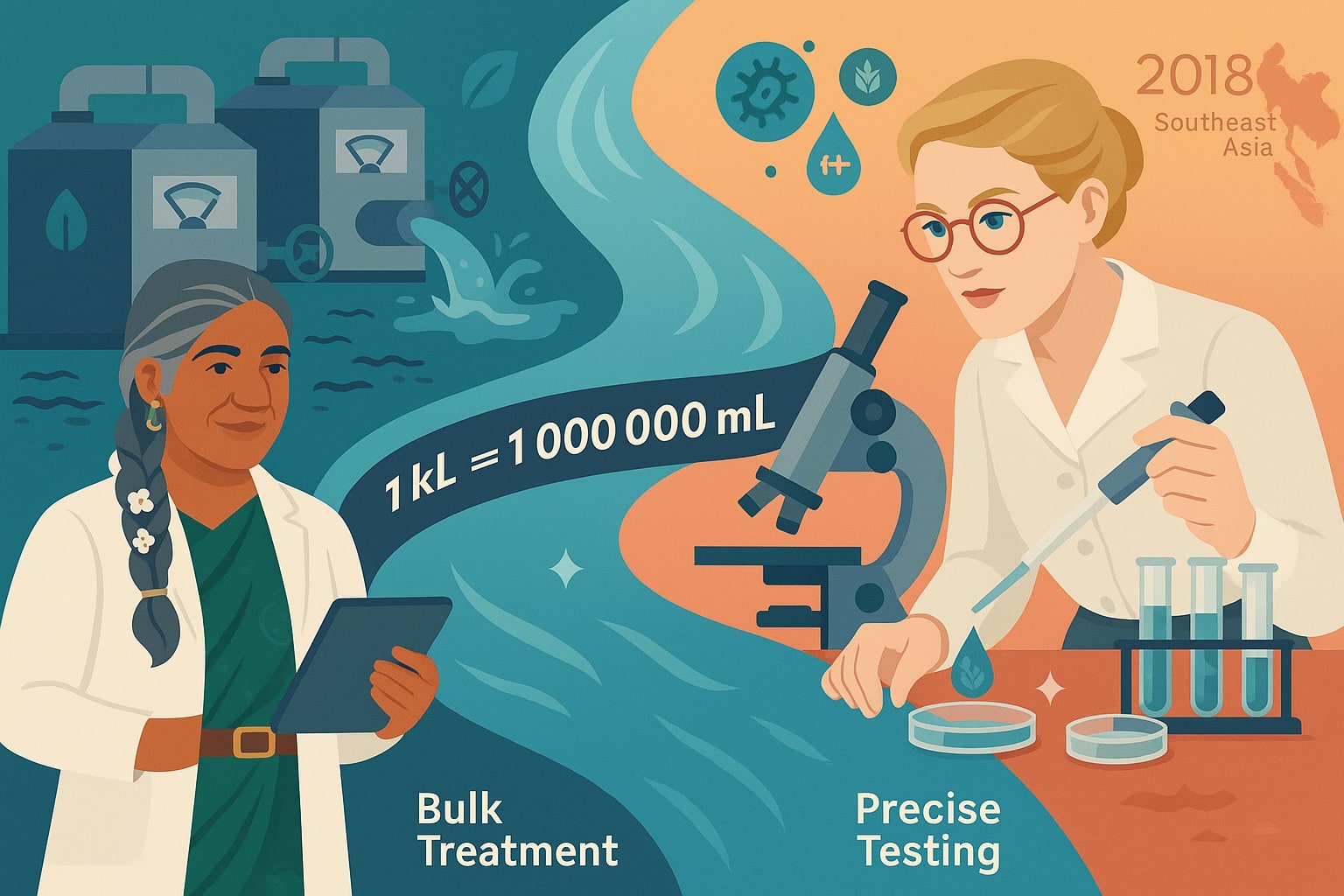Kiloliter to Milliliter – How to convert kL to mL
Need to convert kiloliter to milliliter? These two metric units couldn’t be more different in scale – one measures giant water tanks or industrial liquids, while the other handles small amounts like medicine or lab samples. Fortunately, because they’re both in the metric system, the conversion is straightforward. Below, we’ll explain how to do the math, share where each unit is commonly used, and reveal some surprising real-world examples of when these extremes meet.

What is a kiloliter (kL)?
A kiloliter is a large metric unit equal to 1,000 liters. It’s commonly used by municipal water suppliers, agricultural operations, and industrial facilities that handle fluids in bulk.
Utility companies often report water consumption for households in kiloliters, as it keeps the numbers manageable compared to quoting thousands of liters on bills or reports.
What is a milliliter (mL)?
A milliliter is one of the smallest practical metric units for volume, equal to 1/1,000 of a liter (1 cm³). It’s used in medicine, cooking, cosmetics, and scientific labs to measure exact amounts, like liquid medicine doses or chemical reagents.
Milliliters are the standard for precision work, where even a single drop can make a difference.
How to convert kiloliter to milliliter
Thanks to the metric base-10 structure, the formula is easy:
1 kiloliter = 1,000,000 milliliters (1 kL = 1,000,000 mL)
To convert:
Milliliters (mL) = Kiloliters (kL) × 1,000,000
Example: If a rainwater tank holds 12 kL:
12 × 1,000,000 = 12,000,000 mL
For instant results (especially with large figures), try our Volume Converter or check other Conversion tools.
Did you know?
-
Medical research: Pharmaceutical companies often produce experimental solutions in kiloliter batches but dispense trial doses in milliliters. One study by the European Medicines Agency noted that production volumes can reach 5–10 kL, yet a single patient dose might be just 2 mL.
-
Agriculture: Vineyards in France frequently report annual yields in kiloliters of wine, while sommeliers describe tasting portions in milliliters to standardize sensory evaluations.
-
Environmental science: River flow measurements can be modeled in kiloliters per second for regional planning but are broken into milliliters per sample when testing for pollutants like microplastics.
-
Aviation: Jet fuel is stored in kiloliters for logistical tracking, but maintenance crews measure additives (like anti-icing agents) in milliliters because even slight imbalances can impact performance.
How Converting These Units Helped Clean a River
In 2018, researchers in Southeast Asia worked on a project to clean heavily polluted river systems. According to a report in Water Research Journal, bulk water flow for treatment was recorded in kiloliters to manage pump capacity and treatment rates. However, when testing for contaminants like heavy metals and bacteria, scientists used milliliters for precise lab samples.
Switching smoothly between kiloliters for large-scale management and milliliters for microscopic analysis allowed the team to track pollution effectively and measure progress as the cleanup advanced.

Wrapping It Up
Converting kiloliter to milliliter is just multiplying by 1,000,000 – simple math, but it bridges two very different worlds. From tracking massive water supplies to measuring delicate lab samples, understanding this conversion ensures accuracy across industries.
For quick, reliable calculations, use our Volume Converter or explore more Conversion tools to make every unit conversion effortless.

